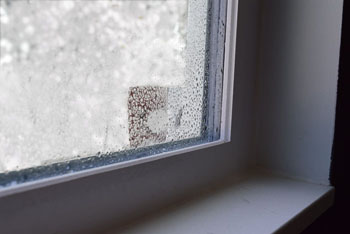Homeowners reported noticing persistent condensation forming on a north-facing window subsequent to major renovations to their Utah home. In the weeks that followed, they began to notice the musty odor of microbial growth in the vicinity of the window. Eventually, the wall below the window was opened to reveal apparent microbial growth within the wall cavity. An EIS engineer was engaged to evaluate the site conditions to determine why condensation was continually forming on the window.
At the time of the inspection, the wall cavity was open and the affected insulation and the bottoms of some of the 2×4 studs had been removed. There was still visible microbial growth on the plywood floor, the bottom wall plate, and the wall sheathing. Condensation was observed to have formed on the window the time of the inspection.


